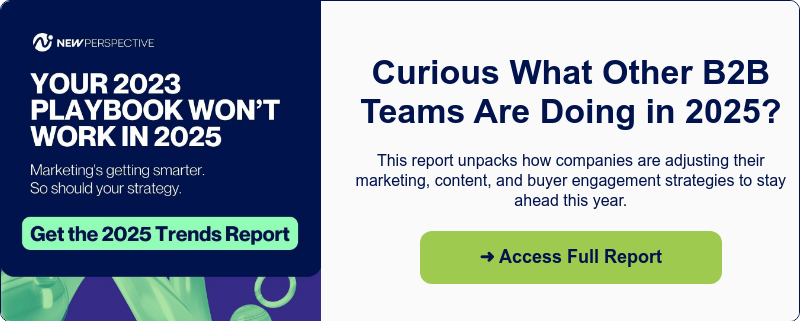Episode Info
Discover how Bevi co-founder Sean Grundy scaled a mission-driven water startup, eliminated 750M bottles, and raised $160M.
Grundy co-founded the company in 2013 after meeting Eliza Becton, a fellow environmental nonprofit alum, in Boston. Over the past decade, Bevi has raised more than $160 million in venture capital, installed machines at roughly a third of the Fortune 500, and—by its own accounting—kept more than 750 million bottles and cans out of circulation. Now, the company is expanding into Europe.
In our Green New Perspective podcast conversation, Grundy discussed courting customers who roll their eyes at climate slides, why his sales team travels like a 1990s beverage company, and what happens when a job applicant arrives with a single‑use bottle in hand.
Interview with Sean Grundy
Dunya Jovanovic: To start, tell our audience a bit about yourself and how Bevi began. What’s the origin story people don’t know?
Sean Grundy: I grew up in New York and New Jersey, studied philosophy in college, then spent several years at an environmental nonprofit. In business school, I set out to combine an environmental mission with a profitable venture. That’s when I met my co-founder, Eliza Becton, in Boston. The idea—hers originally—was a machine that purifies tap water, adds natural flavors, vitamins, or CO₂, and lets people mix countless drinks without single‑use bottles. We’re mission‑driven: eliminate plastic waste by selling practical beverage machines. Coming from nonprofits, we both had to learn how to build and run a for‑profit company, but that environmental ethos has guided Bevi for the past 12 years.
DJ: Bevi scaled quickly from startup to B2B. What was your first “we‑made‑it” moment?
SG: Our $2 million seed round in 2015. It let us rent our own (awful) basement office in Boston and hire a team. From that point, the company felt real.
DJ: You describe Bevi as mission‑driven. How do you measure its environmental impact for yourselves and your customers?
SG: Every machine is internet-connected. The data helps us manage refills, but it also shows total drink volume. Because Bevi usually replaces fridges stocked with bottled or canned water, we can estimate how many containers we eliminate and convert that into a carbon footprint figure using academic life‑cycle analyses. We share those numbers with customers for their sustainability reports. So far, we’ve saved more than 750 million bottles and cans, and we hope to reach a billion by year‑end.
DJ: How do you get customers to care—really care—instead of just saying they do?
SG: Honestly, I don’t worry whether they care. I’m thrilled when they buy the product, even if sustainability isn’t their priority. Our sales team leads with cost savings, time savings, and employee wellness; sustainability is the bonus slide. If we could only win buyers who prioritize the planet, we’d stay small. Most mainstream customers value other benefits first, so we make sure Bevi delivers those benefits too.
DJ: Did you have to change your marketing as you grew?
SG: Definitely. Early on, we emphasized sustainability; now we focus on cost, efficiency, and taste while keeping sustainability as an extra perk. In many large companies, someone passionate about the environment will champion Bevi internally, but the final decision‑maker still needs a solid economic pitch.
DJ: Which marketing channels have you doubled down on?
SG: We’ve leaned heavily into events and trade shows. Bevi is experiential—you need to taste the drinks and use the touchscreen. Many prospects become customers only after trying the machine in person. We’re doing at least one event a week.
DJ: My other guests echo that events are back, even after Covid. Does that surprise you?
SG: It does. For years, marketers chased perfect attribution online, but events are hard to measure. Still, the anecdotal evidence is undeniable: in our case, tasting the product closes deals.
DJ: Your machines track office habits. What return‑to‑office trends do you see?
SG: Office attendance is rising—gradually but consistently. On average, people are in about three days a week, and they stay longer on those days; dispenses before 9 a.m. and after 5 p.m. are up. New York and Boston are ahead of San Francisco, but even the Bay Area is climbing. Companies also watch their competitors’ policies and adjust their own.
DJ: How do you keep Bevi’s mission and culture strong as the team and customer base expand?
SG: Early employees joined for the mission because we had no money or traction. Success attracted people who were more excited about growth than sustainability, creating cultural tension. We look for both: passion for the mission and commitment to the business. Red flags—like showing up to an interview with a plastic bottle—are deal‑breakers. We talk about our mission constantly and educate new hires, but we also need people who can run a scalable company.
DJ: Looking ahead, what opportunity excites you most?
SG: International expansion. We launched in the U.K. and Ireland in December, and if that continues to go well, we’ll add more countries. We’re also releasing an upgraded machine this summer—better flow, stronger carbonation, better flavors. The product roadmap keeps me motivated.
DJ: What’s your top piece of advice for leaders scaling quickly?
SG: Hire stage‑appropriate executives. The person who can take you from $1 million to $10 million in revenue isn’t always the one to get you from $50 million to $100 million. Early on, functional mastery matters; later, managerial skill—recruiting, coaching, organizing large teams—becomes critical. Choose leaders who fit the stage you’re entering.
DJ: Lastly, for any office manager ready to clear the break‑room fridge of single‑use bottles.
SG: Visit our website Bevi.co—.co because “dot‑com” was expensive, and my inbox is sean@bevi.co. Tell me how many people you need to hydrate, and we’ll take it from there.
👉 Follow Bevi:
Website: https://bevi.co/
LinkedIn: https://www.linkedin.com/company/bevi/
🎧 Subscribe to our podcast
💬 Follow GNP on Social




